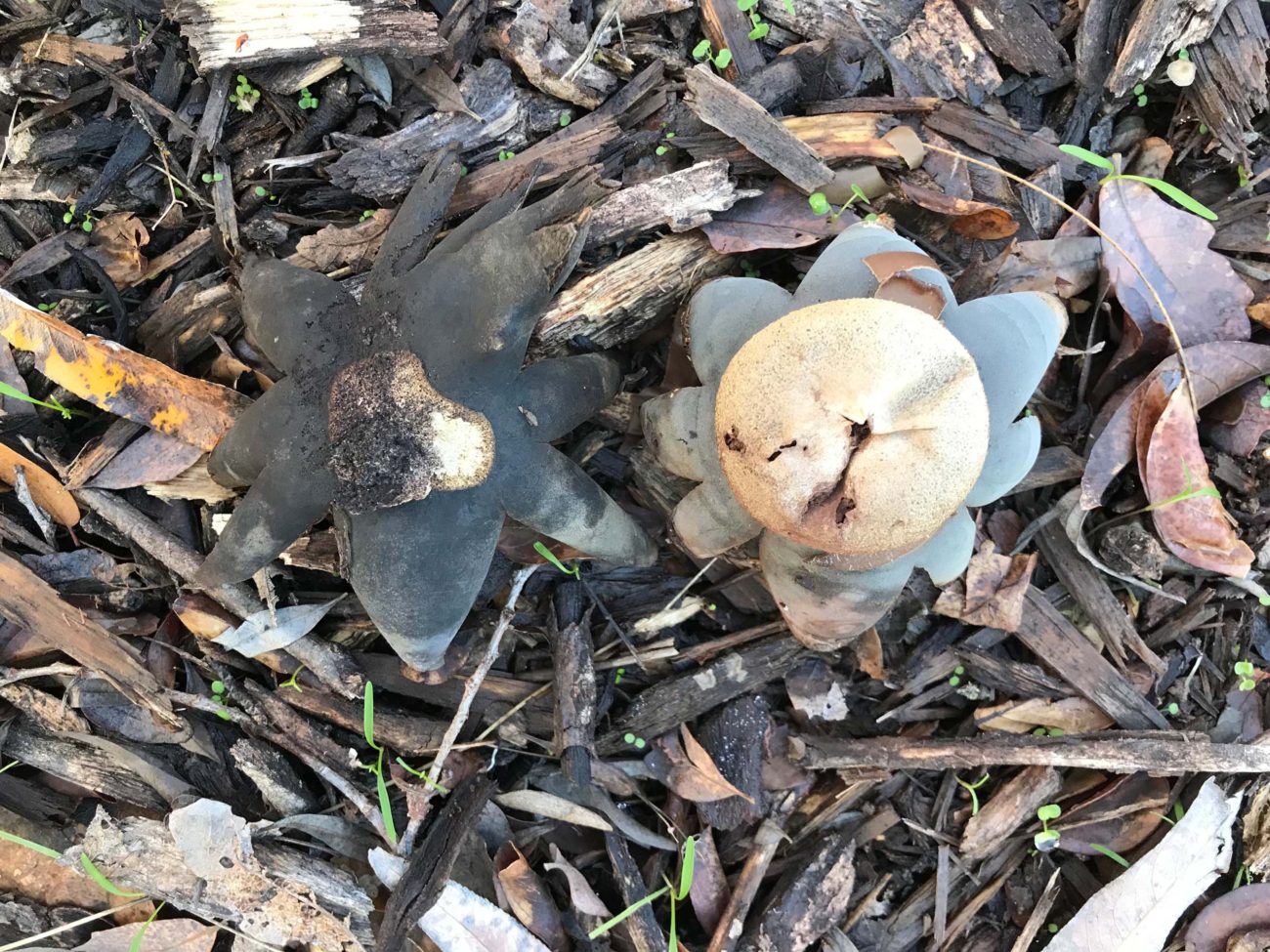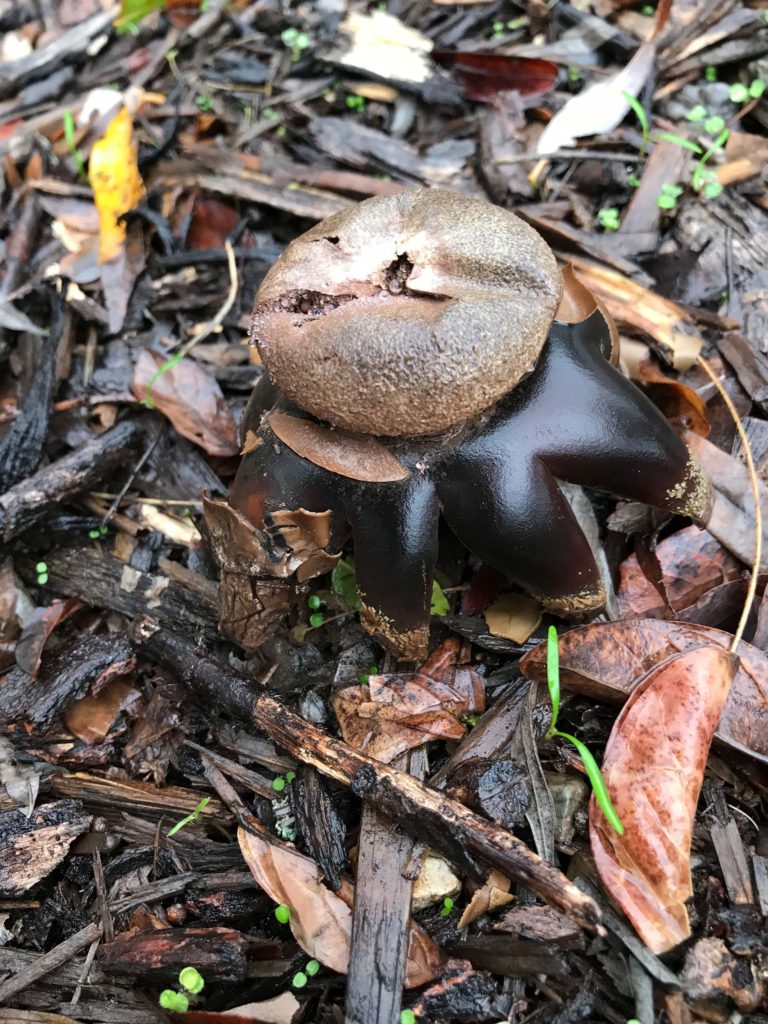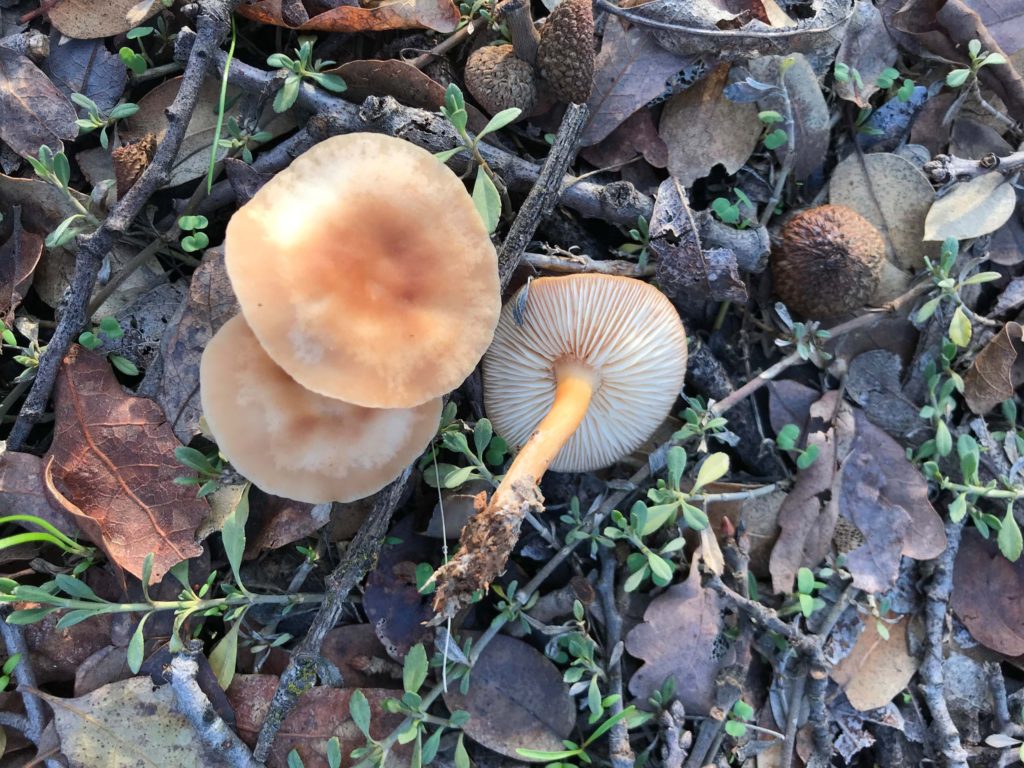
Dear Members and Friends,
With the first rain of the season, I took a deep, grateful breath and expanded like earthstars. These fungi, called earthstars or barometer stars, are related to puffballs. They consist on the outside of thick, moisture-absorbing layers that swell in wet weather and open into the star. Inside is a structure like a puffball, filled with spores. The rain opens the star, helps the spores disperse, and nurtures the fungal growth that will become the next generation of stars. Often the first fungi seen in the fall, the fruiting of these earthstars kicks off the mushroom new year. They are common in our forests of blue, live, and valley oaks.

Another early fungus is the oak-loving gymnopus, Gymnopus dryophilus (formerly known as Collybia dryophila), a small peachy-beige mushroom that can tolerate the wet/dry cycles typical of our early rainy season. Like the earthstars, the little mushrooms can dry up and later rehydrate as the weather requires.
Along with these early fungi are the elongate seedlings of native annuals such as miner’s lettuce and the emerald carpet of grass.

In this season, I feel thankful for the past year, and anticipate the new season. As always, many thanks to all the wonderful people who support Shasta Chapter and our native plants in any way. Because native plants support everything else. Thank you!! -Susan Libonati-Barnes, President
Note: a general distillation of my mycology years: Don’t eat nuffin!
